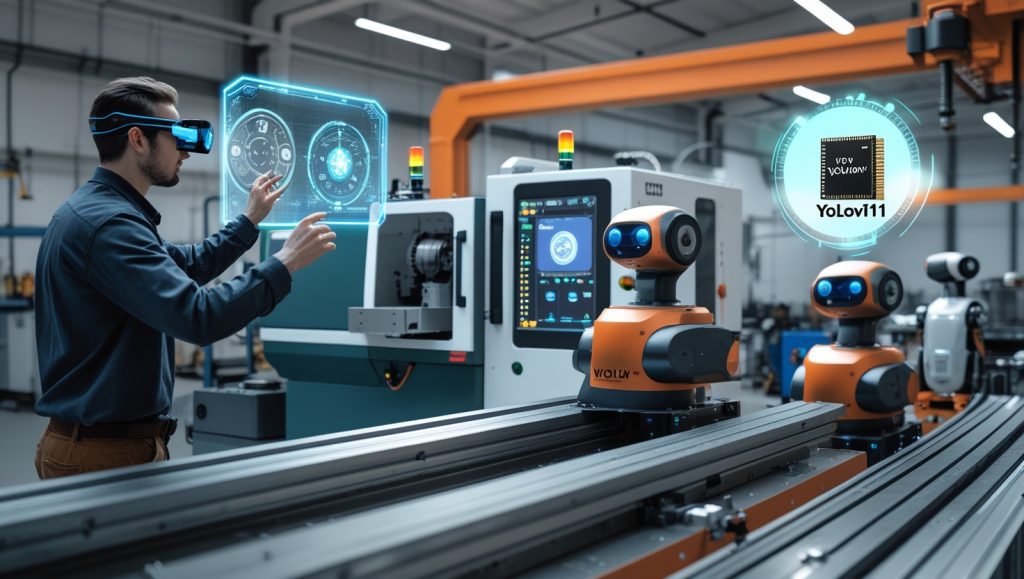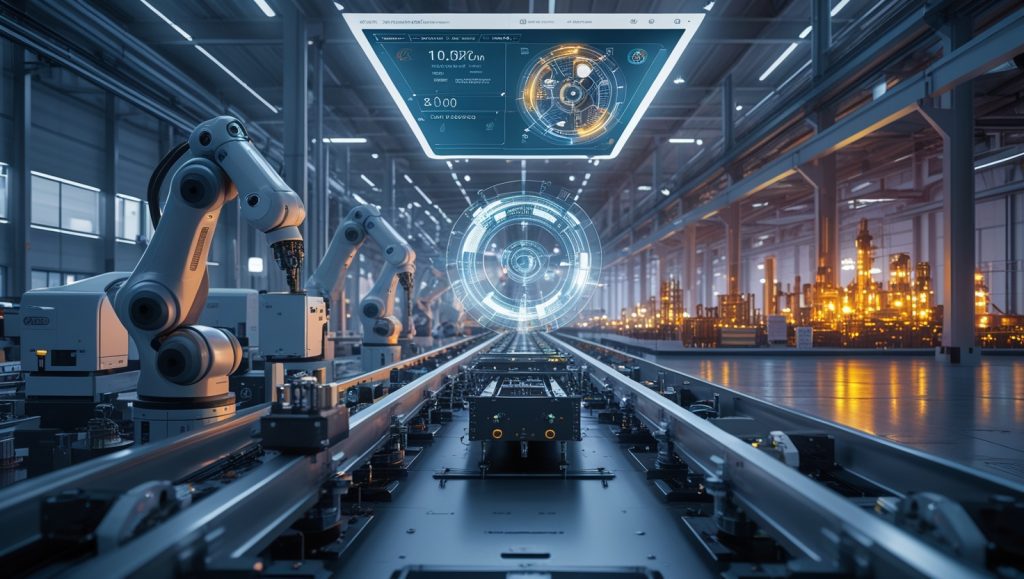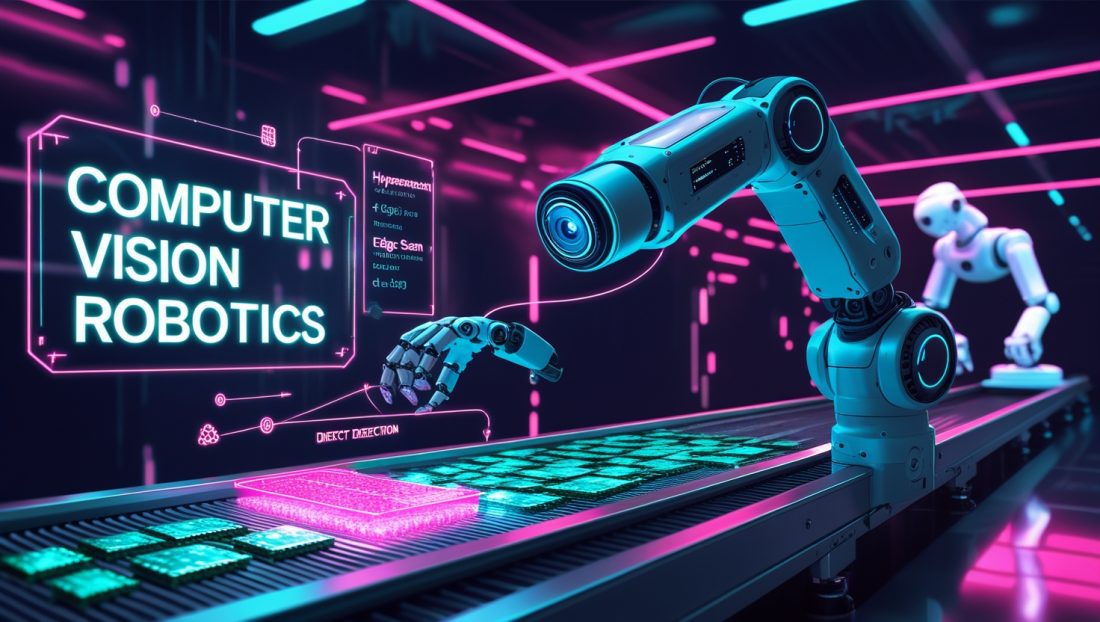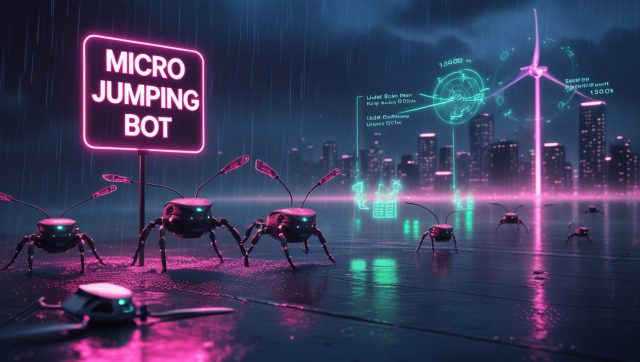The Silent Surge: How Computer Vision is Transforming Industrial Robotics Beyond Recognition
In a bustling automotive plant in Stuttgart, technician Lena monitors a dashboard displaying real-time analytics. Two years ago, she would have been walking the production line, clipboard in hand, visually inspecting weld points. Today, robotic arms equipped with 3D vision sensors detect microscopic defects invisible to the human eye—before they become costly recalls. This quiet transformation exemplifies computer vision robotics integration, the seamless fusion of optical intelligence and mechanical precision redefining modern industry.
Why This Convergence Accelerates Now
Global manufacturing labor shortages cost $1 trillion annually, while quality standards tighten exponentially. Consider these converging catalysts:
- Precision demands: Aerospace tolerances now measure in microns, beyond human visual capability.
- Supply chain pressures: Nearshoring requires 24/7 production with near-zero defect margins.
- Sustainability mandates: UN goals demanding 45% waste reduction by 2030 make efficiency non-negotiable.
“We’re witnessing cognitive capabilities embedded in steel,” observes Dr. Mei Chen of MIT’s Perception Engines Lab. “Vision-enabled robots don’t replace workers—they become collaborators that amplify human potential.”
The Technical Engine: Beyond Basic “Sight”

Computer vision robotics integration relies on layered technologies working in concert:
1. Vision Systems Redefined
Modern systems integrate hyperspectral imaging for material composition analysis and ViSWIR lenses (400nm-1,700nm range) for defect detection invisible to humans. Event cameras enable microsecond responses to pixel-level changes—critical for high-speed assembly lines.
Advanced Computer Vision Sensors for Industrial Robotics
Hyperspectral imaging now identifies material flaws in real-time, boosting quality control by 30% in semiconductor plants. These sensors, paired with event cameras, support high-speed robotic defect detection, ensuring zero-error production. Cognex’s vision systems lead this charge, offering scalable solutions for manufacturers upgrading legacy lines.
2. AI Architectures at the Edge
Real-time decision-making occurs through optimized edge computing frameworks:
python
# Industrial vision processing loop (simplified)
frame = swir_camera.capture()
defects = yolov11_model.detect(frame) # Ultralytics real-time inference
if defects:
robotic_arm.reposition(defect_coordinates)
cloud.upload(analytics) # Federated learning updateNVIDIA’s Jetson platform exemplifies this, leveraging GPU acceleration to meet computational demands. For deeper insights into edge computing’s role, explore how edge AI optimizes industrial processes.
3. Sensor Fusion Breakthroughs
PanoRadar systems merge radio waves with optical data, enabling navigation through visually obstructive environments like smoke-filled factories. ABB’s YuMi cobot demonstrates this “superhuman vision,” spotting sub-100-micrometer defects during assembly—half the width of a human hair.
Sensor Fusion Technology in Robotic Navigation
PanoRadar’s integration of LiDAR and optical data ensures robots operate flawlessly in harsh conditions, reducing downtime by 25% in chemical plants. This technology, pioneered by Velodyne’s LiDAR solutions, enhances robotic safety and efficiency. Learn how digital twins complement sensor fusion for predictive maintenance.
Sector Transformations: Where Impact Resonates
Manufacturing Precision Revolution
BMW Regensburg’s 3D vision-guided robots reduced welding defects by 83%, cutting inspection time from hours to milliseconds. FANUC’s Zero Down Time system monitors 7,000 robots across 38 factories, predicting failures before they occur—preventing 72 component failures in 18 months. Discover how AI-driven predictive maintenance amplifies these gains.
Logistics Reimagined
Amazon Sparrow robots handle individual products using real-time object recognition, while their 1,000 vision-equipped delivery vans (2025 deployment) scan packages during transit. Singrow’s pollination robots identify ripe strawberries with 20% higher yield rates while using 40% less energy than traditional farms.
Vision-Guided Autonomous Delivery Robots
Amazon’s delivery vans leverage vision systems to optimize last-mile logistics, cutting delivery times by 15%. These advancements align with Switzerland’s autonomous delivery robots, which tackle global supply chain challenges. Zivid’s 3D vision cameras power such precise object recognition.
Sustainability Multiplier Effects
John Deere’s See & Spray reduces herbicide use by 90% through pixel-accurate weed detection. Fanuc’s micro-sleep mode between operational cycles cuts robot energy consumption by 35%. Computer vision sorting achieves 99.9% material recovery rates in recycling plants. See how robotics in recycling drives global sustainability.
Implementation Realities: Navigating Roadblocks

Integration Challenges
- Skill gaps: 73% of manufacturers lack computer vision expertise.
Solution: Siemens’ Digital Twin Academy trains technicians via AR simulations. - Legacy system compatibility
Solution: Modular vision kits retrofit existing lines—Computar’s LensConnect adapts 20-year-old CNC machines.
Cost Strategies for Scalability
- RaaS models: Formic offers vision-guided robots at $8/hour with zero capital investment.
- Edge optimization: Quantized YOLOv11 models reduce processing needs by 60%, enabling older hardware deployment.
The Human Impact Paradox
Contrary to replacement fears, integration creates specialized roles:
- Robot ethicists at Mercedes program vision systems via no-code interfaces.
- Vision trainers at Tesla annotate 3D point clouds for autonomous vehicle navigation.
- Warehouse injury rates dropped 52% after vision-guided forklift deployment.
For a deeper dive into workforce shifts, check out automation’s impact on manufacturing jobs.
Future Frontiers: Beyond 2025
- Generative physical AI: BMW tests factories where humans direct vision-enabled cobots via gesture control.
- Self-calibrating systems: MIT’s EagleEye algorithms optimize lens focus based on environmental conditions.
- Multimodal learning: NVIDIA’s VIMA combines vision and language models for intuitive robot instruction.
Explore how reinforcement learning enhances robotic training for these future systems.
The Integration Imperative

Companies resisting this convergence risk irreversible decline. Those embracing it—like Lena’s Stuttgart plant operating with tenfold output and zero quality escapes—aren’t just surviving. They’re redefining industrial possibility.
FAQ: Addressing Core Concerns
Can small manufacturers afford vision-enabled robotics?
Yes. Robotics-as-a-Service (RaaS) models like Formic’s $8/hour offerings eliminate upfront costs. Modular retrofit kits adapt existing equipment.
How does this impact workforce demands?
It creates specialized roles. Mercedes technicians now earn 30% more as vision system programmers. Siemens’ upskilling initiatives retrain assembly workers as automation supervisors.
What’s the ROI timeline?
BMW reported 14-month payback periods. Amazon’s vision-guided warehouses saw 40% efficiency gains within 6 months.
Can these systems handle variable lighting/conditions?
Advanced sensor fusion combines LiDAR, thermal imaging, and millimeter-wave radar. ABB’s YuMi operates reliably in 0.1 to 100,000 lux lighting ranges.
How reliable is defect detection?
Volvo’s Atlas system spots 40% more defects than manual inspections. Pharma Packaging Systems achieve 99.9% tablet inspection accuracy.
Your Next Step?
- Explore the algorithms powering this revolution: Ultralytics YOLOv11 Technical Specifications
- Understand sustainability impacts: IFR Robotics Sustainability Report 2025
- See industrial case studies: Siemens Digital Twin Academy
Subscribe to our Newsletter for Industrial AI Insights, monthly analysis on implementing vision-guided systems. First access to our BMW factory tour VR experience (Coming Soon).



